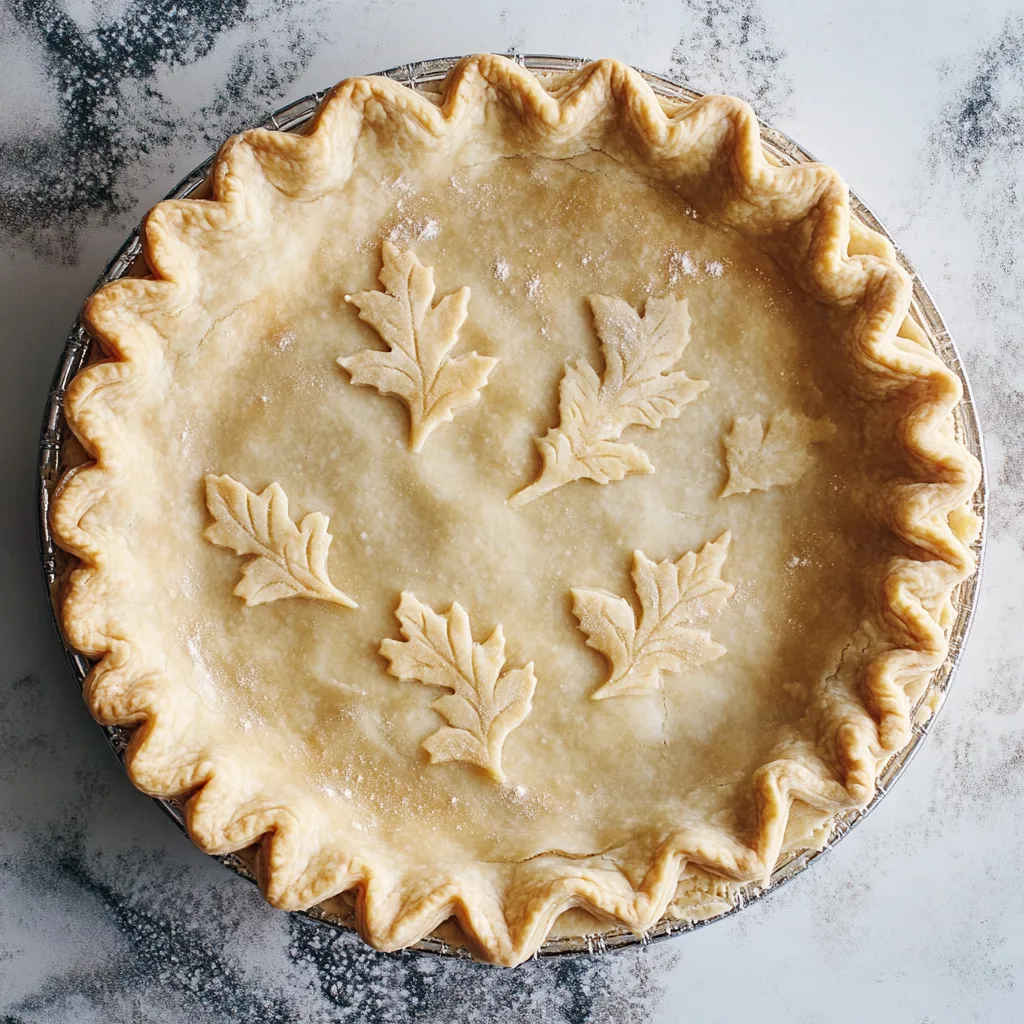 Pin
Pin
This hearty all-butter pie crust recipe has transformed my baking from ordinary to extraordinary. With just five simple ingredients, you'll create a buttery, flaky crust that will have everyone thinking you studied pastry in Paris.
I first developed this recipe during a Thanksgiving baking marathon when my store-bought crusts kept cracking. After countless tests, this version emerged as the family favorite that my daughter now requests for every holiday gathering.
Ingredients
- All-purpose flour: Provides the perfect structure without becoming tough
- Granulated sugar: Adds a hint of sweetness and helps with browning
- Fine salt: Enhances all the flavors and balances the sweetness
- Cold unsalted butter: Creates those perfect flaky layers when it melts in the oven
- Ice cold water: Binds everything together without activating too much gluten
Step-by-Step Instructions
- Prepare the Butter:
- Freeze your butter for 10 minutes until very cold. Grate it using a box grater or food processor attachment. Return to freezer for another 10 minutes. This creates perfect butter pieces that distribute evenly throughout the dough.
- Combine Dry Ingredients:
- Mix flour, sugar, and salt in a deep bowl. Add the cold grated butter and quickly work it into the flour until you have pea-sized pieces. Work fast to keep everything cold which is crucial for flakiness.
- Add Water Gradually:
- Drizzle ice water a tablespoon at a time, tossing gently until the dough holds together when pressed. The mixture will still look somewhat crumbly but should stick when pressed between your fingers.
- Form the Dough:
- Turn the mixture onto a clean surface and press it together. Fold the dough over itself three times to create layers. Cut in half for double crust and shape into 4-inch disks. Wrap in plastic and refrigerate at least six hours or overnight.
- Roll the Dough:
- Let dough sit at room temperature briefly until slightly pliable. Roll on a floured surface, turning frequently to maintain even thickness. Roll to a 12-inch circle about 1/8-inch thick for a 9-inch pie pan.
- Shape and Chill:
- Drape dough over pie tin and gently press into corners without stretching. Trim leaving a 1-inch overhang, fold under, and crimp edges. Pierce bottom with fork and refrigerate at least 2 hours before baking.
 Pin
Pin
The secret to this crust is truly in the temperature. My grandmother always said cold hands make the best pie crust, and she was right. I keep a bowl of ice water nearby to dip my fingers in when they get too warm from handling the dough.
The Importance of Resting Time
While it might seem tempting to rush the process, allowing your dough to rest in the refrigerator is absolutely essential. During this time, the flour fully hydrates and the gluten relaxes, resulting in a more tender crust. The butter also firms up, which helps maintain those distinct layers that create flakiness. I once tried to skip this step when short on time, and ended up with a tough, shrunken crust that still haunts my baking memories.
Troubleshooting Common Issues
Crumbly dough usually means you need a bit more water. Add it one tablespoon at a time until the dough just holds together. Conversely, sticky dough indicates too much water. Work in a bit more flour, but be careful not to overwork the dough.
If your crust shrinks during baking, it was likely stretched when placed in the pan. Always lift and gently place the dough rather than pulling it to fit. Additionally, proper chilling before baking helps prevent shrinkage by allowing the gluten to relax.
For a soggy bottom, try moving your oven rack to the lowest position and preheating a baking stone if you have one. The direct heat helps create a crisp bottom crust that stands up to even the juiciest fillings.
Creative Variations
Transform this basic dough into something special by adding herbs for savory pies. Chopped rosemary pairs beautifully with chicken pot pie, while thyme complements vegetable fillings. For sweet pies, try adding cinnamon or citrus zest to the dry ingredients. My personal favorite is adding a teaspoon of vanilla extract to the water when making apple or peach pies.
Recipe Questions & Answers
- → How do I achieve a flaky texture?
Ensure your butter is very cold and do not overwork the dough. The cold butter creates layers as it melts during baking, which results in flakiness.
- → Can I use salted butter instead?
Yes, but reduce or omit the added salt in the recipe to adjust for the salted butter. This helps balance the flavors.
- → Why is chilling the dough important?
Chilling allows the gluten to relax, prevents shrinking, and ensures the butter stays cold, which is crucial for a tender and flaky crust.
- → What is the best way to roll the dough?
Roll the dough on a floured surface, turning it regularly to prevent sticking. Use a light touch to avoid compressing the layers.
- → Can I freeze the dough for later use?
Yes, tightly wrap the dough in plastic wrap before freezing. Thaw overnight in the refrigerator before rolling out.